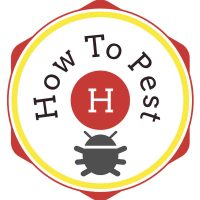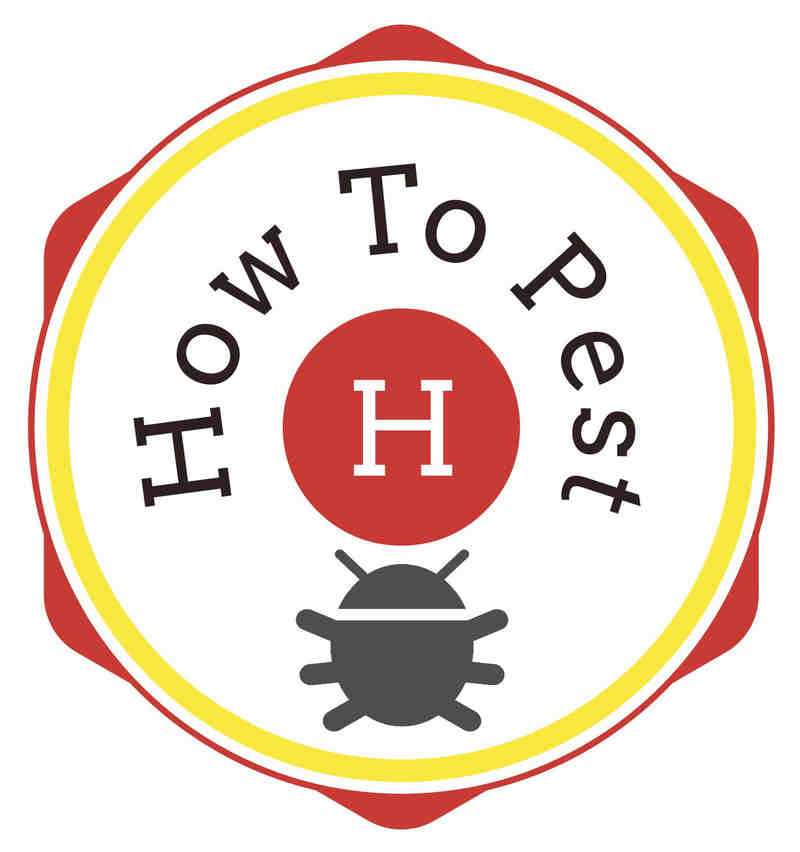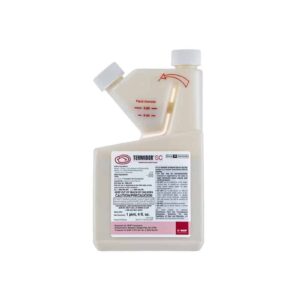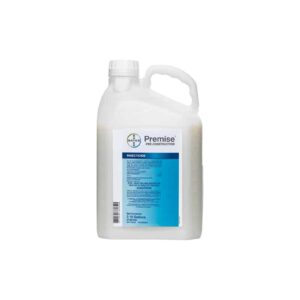Description
Product Alternative: Termidor SC
Active Ingredient: Chlorfenapyr – 21.45%
EPA Registration No.: 241-392
Product Information:
In order to maximize the termite potency of Phantom termiticide-insecticide it should be applied in a manner to provide a continuous treated zone to prevent termites from attacking the wood to be protected.
The objective of soil treatments with Phantom is to establish a treated zone (horizontal and/or vertical as needed) between the wood and other cellulose material in the structure and the termite population(s) in the soil for the purpose of protecting the structure from termite infestation and/or for controlling existing termite populations. Treatment standards for subterranean termite control may vary due to state/local regulations, treatment procedures, soil types, construction practices and other factors. Follow all federal, state, and local regulations and treatment standards for protection of a structure from subterranean termites. Observe industry good management practices.
Where aerial infestations or above-ground nests are detected within the structure, supplemental treatments to control termites in the structure (see Above Ground Termite Infestations section of this label), and/or structural repairs to deprive the termites of a moisture source may be needed.
Mixing Directions:
|
Desired Dilution Concentration* |
Amount of Phantom to make 100 gallons of finished dilution. | Amount of Phantom to make 1 gallon of finished dilution. | ||
| 0 .25% | 150 fl ozs (1 .2 gal) | 4 .4 L | 1 .5 fl oz. | 44 ml |
| 0 .125% | 75 fl ozs | 2 .2 L | 0 .75 fl oz | 22 ml |
| * Percentage weight of active ingredient to weight of spray dilution | ||||
For Mixing Small Volumes of Finished Dilution:
For termite control operations requiring smaller volumes, use 1 .5 fl ozs of Phantom per gallon of water to achieve a 0 .25% concentration; use 0 .75 fl oz of Phantom per gallon of water to achieve a 0 .125% concentration. Mix the termiticide use dilution in the following manner:
1. Fill hand-pressurized or power-operated application equipment with 1/2 to 3/4 of the required amount of water. Filling hose must be equipped with an anti-backflow device or water flow must include an air gap to protect against back siphoning.
2. Measure the required amount of Phantom.
3. Add Phantom to the sprayer and fill with the remainder of the water.
4. Close sprayer and agitate to insure proper suspension.
5. Re-agitate sprayer before use if spraying is interrupted.
For Mixing Large Volumes of Finished Dilution:
For dilution quantities greater than one gallon, the amount of Phantom to add may be determined by multiplying the quantity of Phantom specified for a particular dilution rate for a one-gallon dilution by the total dilution size. For example to make a 50-gallon dilution of a 0 .125% dilution, multiply 50 x 0 .75 fl oz = 37 .5 fl ozs . Then mix 37 .5 fl ozs of Phantom to enough water to make a total 50 gallon dilution . For termite control operations requiring 100 gallons of finished dilution, prepare a 0 .25% dilution by mixing 1 .2 gallons of Phantom with 98 .8 gallons of water; or prepare a 0 .125% dilution by mixing 75 fluid ounces (fl ozs) of Phantom with 99 .4 gallons of water. Mix the termiticide use dilution in the following manner:
1. Fill the tank with water until it is 1/4 to 1/3 full. Filling hose must be equipped with an anti-backflow device or water flow must include an air gap to protect against back siphoning.
2. Start pump to begin by-pass agitation and place end of treating tool in tank to allow circulation through hose.
3. Add the appropriate amount of Phantom (see Dilution Table above).
4. Add remaining amount of water to the tank
5. Let pump run and allow recirculation through the hose for 2 or 3 minutes.
Application Volume:
To provide maximum control of and protection against termite infestations, apply the specified volume of Phantom dilution and active ingredient as set forth in the directions for use. If soil will not accept the labeled application volume, the volume may be reduced provided there is a corresponding increase in concentration so that the amount of active ingredient applied to the soil remains the same. Note: Large reductions of application volume reduce the ability to obtain a continuous treated zone. Variance is allowed when volume and concentration are consistent with label directed rates and a continuous treated zone can still be achieved. At reduced application volume; it may be necessary for the applicator to space rod and/or drill holes closer than 12 inches apart to create a continuous treated zone. DO NOT treat soil that is water saturated or frozen or in any conditions where run-off or movement from the treatment area (site) is likely to occur. DO NOT make outdoor treatments while precipitation is occurring that could result in run-off from the treated area.











Reviews
There are no reviews yet.